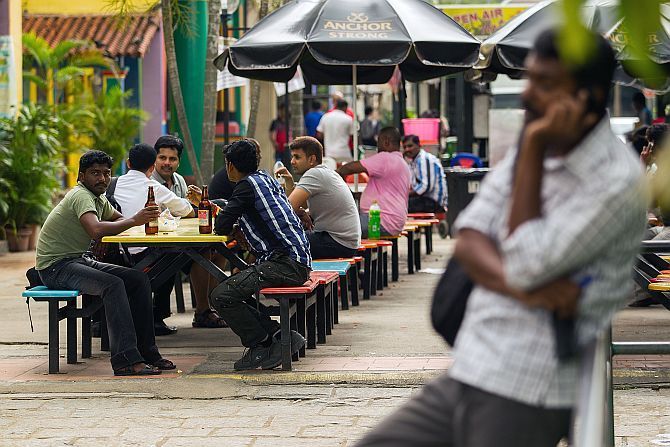“If You Don’t Like It Here, Get Out!”
@
20:45
•
criticism,
politics,
Singapore,
society
•
0
comments
![]()
This post is a political commentary I wrote as the editor of sociopolitical site Inconvenient Questions. It also appeared on Yahoo News.
----------
Asking unhappy people to leave is a favourite debating tactic of some Singaporeans. If you care about Singapore, however, such an approach is ultimately counterproductive. It also goes against the grain of the Government’s current approach towards Singaporeans moving overseas.
That line above or something similar is what you would invariably see if you read enough comments about local issues on social media. It is the rebuttal of choice of some ‘patriots’, wielded against critics who are unhappy about one thing or another in this country.
Admittedly, the lure of greener pastures can be very tempting and many Singaporeans appear to think so. In a survey conducted in 2012, more than half of Singaporeans (56%, to be exact) say they would migrate if given a choice.
One could jump through hoops to explain away this result, or even question the credibility of the survey. But while it is debateable whether or not the majority of Singaporeans are really unhappy here, such a statistic should concern those who care about the future of our country. After all, what is left of a country when most of its people are no longer willing to stay?
This issue of commitment is even more salient for countries like ours that rely on regular citizens to maintain its security. Singapore’s deterrent against foreign aggression depends in large part on its relatively large reserve force comprising Singaporeans who have been called up for National Service. If we are not committed to defending the country when the need arises, the result could be disastrous. Thus, it is vital that Singaporeans of all stripes remain invested in the fate of our nation.
Hence, telling people to leave if they are unhappy is not a forward-thinking approach for those who really care about Singapore’s future. What any true patriot should be doing instead is to ask how they can keep as many Singaporeans as possible interested in, and engaged with, the country’s progress.
Abraham Lincoln once famously said, “A house divided against itself cannot stand.” (Photo: Wes Dickinson)
In a recent trip to New York, Prime Minister Lee Hsien Loong met with overseas Singaporeans there and told them to “Keep in touch with home, keep in touch with us… and one day come back home to Singapore.” His gentle exhortation is a long way away from then Prime Minister Goh Chok Tong’s rebuke – almost 15 years ago – calling some overseas Singaporeans “quitters”. This new approach indicates that the Government is keen not on pushing Singaporeans out and cutting off ties, but on having us remain emotionally invested in our country even if we leave.
Indeed, the Government’s Overseas Singaporean Unit works with other agencies such as Contact Singapore to ensure that overseas Singaporeans are kept engaged. Considering that our Government has such a rational approach towards keeping Singaporeans as close to the country as possible – if not physically, then at least emotionally – should this not be supported by those who truly believe in the Government’s wisdom?
Finally, equality, a value that is mentioned in our national pledge, means everyone’s voice carries weight – even if you vehemently disagree with what some people say. Asking people to leave if they are unhappy is to deny that their voice matters and is therefore a rejection of equality. No matter how one looks at it, that cannot be the right or productive approach.
It must be said that political discussions among Singaporeans might not become much more rational or less acrimonious than they are now. Nevertheless, it is still better to talk to those who disagree than to ask them to get out of the country. After all, if there is no one left to debate politics and policies with, Singapore will probably be the poorer for it.

